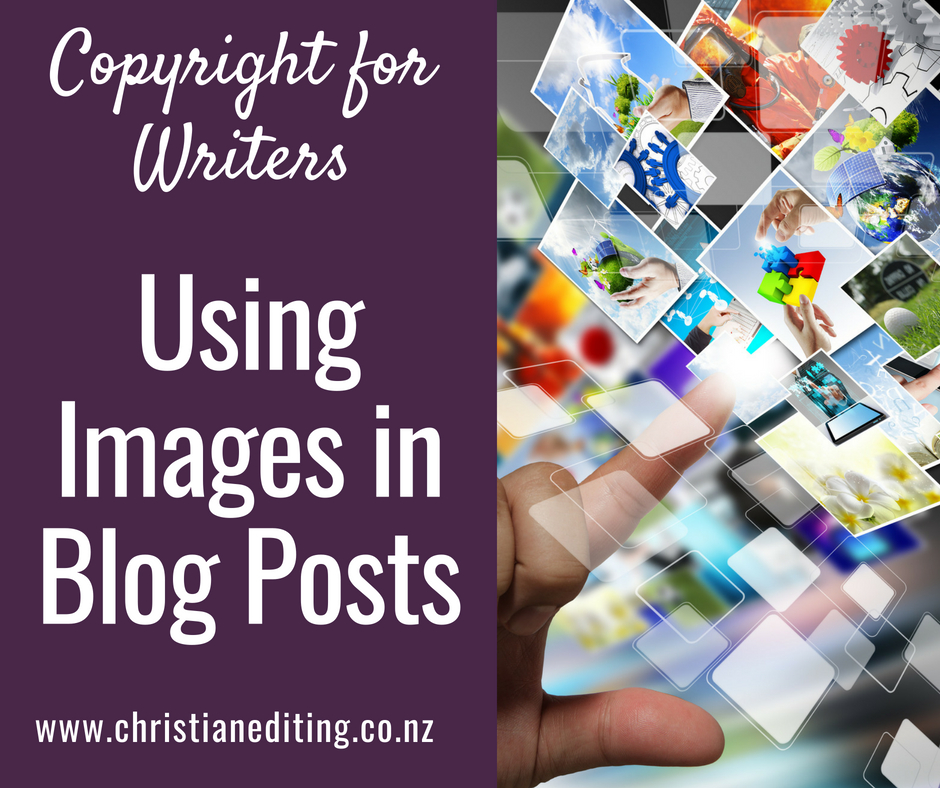Images in blog posts can be a great way to break up the text and make the reading experience more user friendly. But we can’t just use any images in blog posts.
(Note: This is not legal advice. I’m not a lawyer. I’ve never played one on TV. This is my interpretation of the doctrine of fair use, based on my reading of the Chicago Manual of Style, and blog posts written by lawyers. Caveat Emptor.)
Using Images Online
Many people will tell you that you can copy and use any image you find online. Others will tell you certain images or photographs are copyright-free.
They are wrong, as some bloggers have discovered at great cost.
All images on the internet are copyright.
Even photographs of old paintings. The paintings themselves are no longer under copyright, but the photographs are. Using these images without permission is a breach of copyright, in the same way as pirating a book or a movie is a breach of copyright.
Copyright is a form of intellectual property. It means the creator of a piece of content owns that content (apart from exceptions like a work for hire arrangement, which means your employer probably owns the copyright to any content you produce as a part of your normal employee duties).
As a blogger and writer, you want people to respect your copyright rights. You don’t want to find someone has pirated your ebook, plagiarised your paperback, or copied your blog post verbatim.
So it’s only fair that you need to respect the copyright rights of other creators—writers, illustrators, photographers, anyone who creates copyrighted material and shares it online or in real life.
This means you need to make sure you have the right to use any and all images.
Images You Can Use on Blog Posts
Your Own Photographs
If you took the photograph, you own the copyright, and you’re usually safe to use the picture. The exception might be if you’re using a picture of a famous building—some buildings are trademarked and can’t be reproduced commercially (e.g. on a book cover) without permission.
For example, the London Eye can be included as part of a skyline shot, but can’t be the main focus pf the photo. Nor can you use photographs taken from inside the Eye without permission. And while photographs of the Eiffel Tower in daytime are permissible, photographs of the nightly illuminations are not—they are copyrighted.
Note that you have to take the photo yourself in order to own the copyright and the right to use the picture. If a monkey takes a photo on your camera, the monkey may own the copyright on the image (Seriously. The court case is ongoing).
Photos You Own
You can use photos taken by someone else, but for which you have purchased the rights. If you plan to use the image commercially (e.g. on a book cover), make sure your contract includes commercial rights (and check the number of copies, and whether it includes Print on Demand). If the photo includes a model, make sure the photographer has the correct model release form.
Rights to photographs taken by someone else may be exclusive—or not. An exclusive right means the photographer can’t sell that image to anyone else. Non-exclusive rights may mean “your” cover image shows up on other books.
Free Photos from Stock Sites
You can find free photos at sites like Canva, MorgueBay, Pixabay and Unsplash. These sites use a Creative Commons 0 (zero) licence, which means:
you can copy, modify, distribute and use the photos for free, including commercial purposes, without asking permission from or providing attribution to the photographer
Other sites might require you to ask permission and/or provide attribution to the photographer and/or site. Check what acknowledgement is required the first time you use a new site, and get it right.
However, many of the photos on these free sites include photos that depict trademarked or copyrighted objects. For example, Unsplash has hundreds of pictures of Apple products. Use these pictures at your own risk.
Canva has a list of 73 sites offering free photos. As an added bonus, they’ve ranked the sites in terms of the size of the gallery, searchability, and whether attribution is required.
There are many terms you need to understand before using images from a free or paid stock site. This blog post from ACES: The Society for Editing discusses the terms relating to images and permissions.
Photos from Paid Stock Sites
There are many stock photography sites offering a range of images, at a range of prices. Most stock sites will allow you to download a watermarked version of the image for free, but you shouldn’t use this version for your blog post. When it comes to blog posts, you need to ensure you get the official version, the one with no watermarks.
Charges for photos vary by site, and depend on the size of the photo, and the intended use. A book cover needs a high-resolution photo, and needs a commercial licence that covers all formats of the book, and a large number of copies. A blog post only needs a low-resolution photo (which is quicker to load).
Most paid stock sites charge per download, and some charge more for better-quality photos. Some sites offer credits or bundles, with the unit cost decreasing the more you buy. Some sites operate on a subscription model.
StoryBlocks.com
I use StoryBlocks.com, which costs USD 99 for an unlimited annual subscription (there is also a USD 49 subscription which allows you to download five images a month). Their selection isn’t as big as some of the more expensive sites, and they don’t have many images that would be suitable for book covers. But it’s a great resource for images for blog posts or memes.
StoryBlocks offer a 100% royalty free worldwide licence in perpetuity, and $20,000 in indemnification coverage (which gives me a level of confidence in their photos that I no longer have with sites like Unsplash). Click here to view their full licence agreement.
Lightstock
I also use Lightstock—it’s great for cheese-free Christian images. It is a paid site, but you can sign up to their email newsletter and they’ll send you a link to their free download of the week. This is a cost-effective way of building up a library of photos suitable for Bible memes or photos to accompany devotional posts. The only catch is we all get the same free photo each week—there is no choice. But it’s free (unless you want to pay as you go or subscribe), and the images are beautiful.
The Fair Use Exception to Copyright Law
The doctrine of fair use is entrenched in copyright law, and does allow copyrighted content to be used under certain conditions. For example, it’s acceptable to quote from another author’s work or reproduce small amounts of graphic or pictorial material for the purposes of review or criticism.
The same fair use exceptions apply for images as they do for written content. But the application is a little different. I can’t copy someone else’s book cover. But I might be able to purchase the same photo from a stock photo site, which will mean our covers have a similar look. Yes, this is why big publishers spend big bucks on customised photo shoots for book covers.
I can (and do) use thumbnail images book covers in memes. I consider this fair use, as I’m promoting their book. If an author or publisher didn’t want me to promote their books, I would stop. (But that would be short-sighted: user-generated content is considered a sign of social proof, and many major brands actively solicit and promote user-generated content).




Thanks for sharing this! The stock images I use on my page are usually from Pixabay but if I get them from elsewhere I at least make sure they are commercial free for use. I copy a lot of my thumbnail images from Goodreads for the purpose of sharing a review or I receive the images sent through email as part of tours. When I first started blogging I was terrified they’d come after me for using the image of the book because it would be copyrighted, but as you said above I’m also promoting their book so it’s actually helping them.
There is certainly some peace of mind in knowing your images are legitimate – that’s a big benefit of using a site like Pixabay.